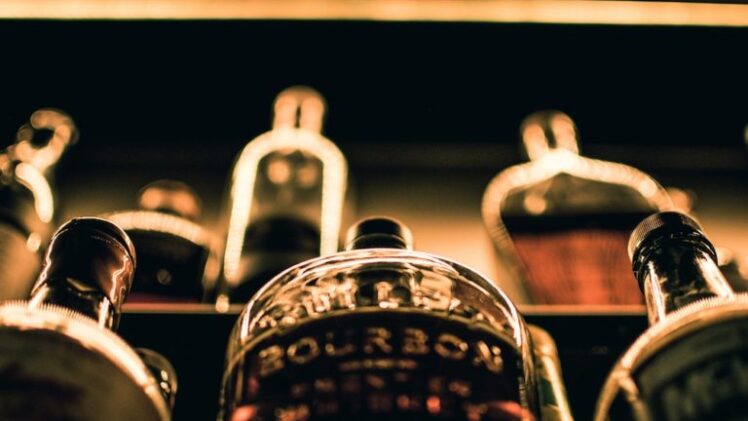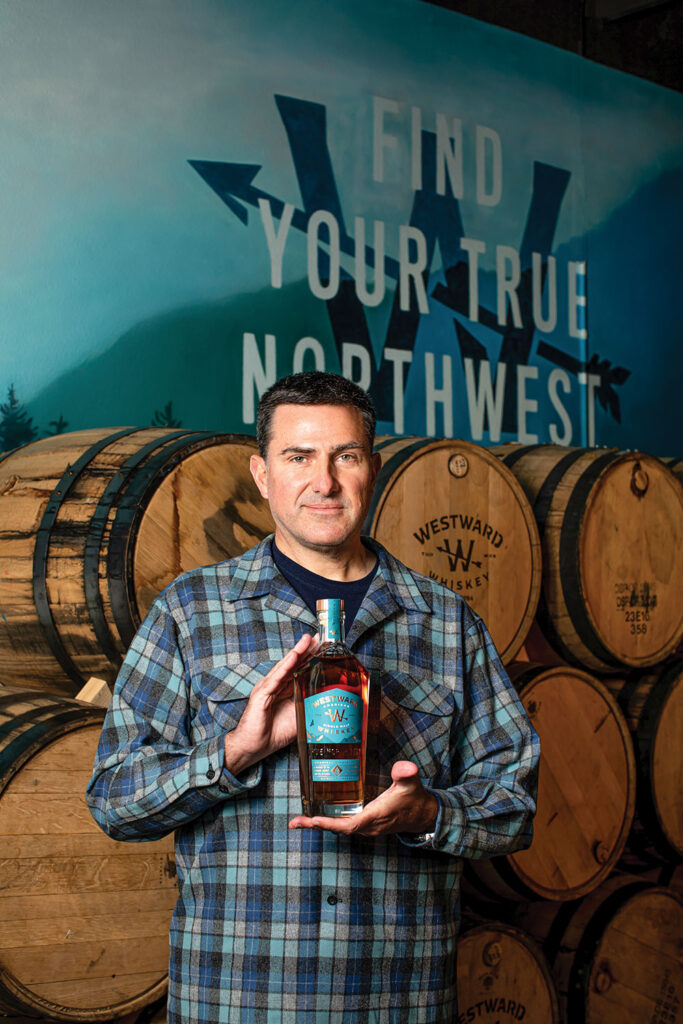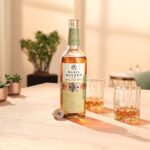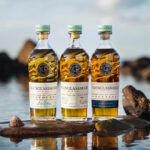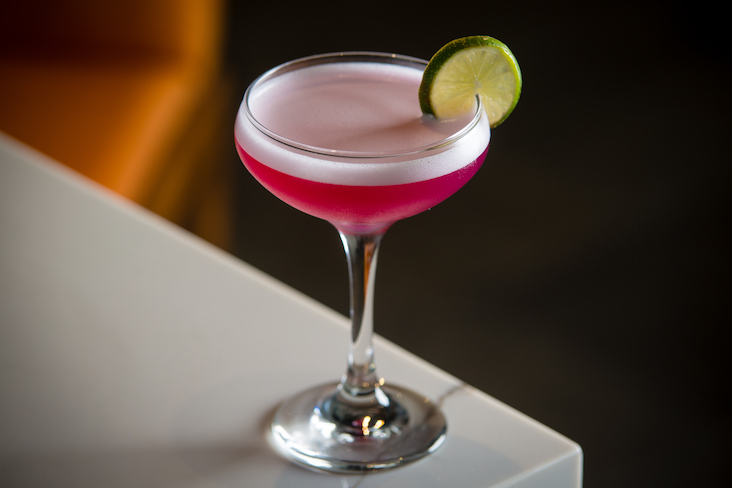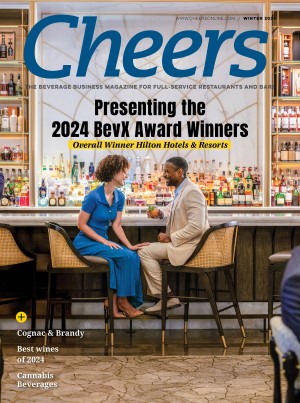Things could not be going better for the American whiskey category. It’s firing on all cylinders as an ever-diversifying consumer base snaps up all kinds of new styles from producers both big and small.
“We’ve increased our whiskey shelf presence three times in the last three years,” says Tom Agnes, liquor operations manager for Brooklyn Center Liquor in Brooklyn Center, MN. “And every time we do it, more products are coming. And they’re selling, that’s the thing.”
Adds John “Fitzy“ Fitzpatrick, spiritual advisor at Warren American Whiskey Kitchen in Delray Beach, FL, “This is the most popular whiskey’s been in history, which is crazy because we’re only two decades removed from the absolute lowest of lows.”
At the New Hampshire Liquor Commission’s (NHLC) 66 locations, American whiskey sales show no signs of slowing. “It’s an exciting time as established brands are responding with new and exciting offerings, and new brands are coming on the scene each day,” says Mark Roy, NHLC spirits marketing and sales specialist. American whiskey is NHLC’s second most popular category behind vodka, having grown in the past five years from $59.9 million to $75.7 million.
The Distilled Spirits Council of the United States (DISCUS) says the category reached $5.1 billion in sales in 2022, an increase of 10.5% in revenue from 2021, outpacing all of the other top spirits categories except for tequila/mezcal. At the same time, American whiskey volume increased 5.2% to 31.2 million cases, putting it just behind RTD cocktails and the industry leader, vodka. By both revenue and volume, American whiskey is now the third-largest beverage alcohol category, according to DISCUS.
An Engaged Consumer Base
If there is one engine driving the category to new heights, it’s consumer passion. On- and off-premise purveyors across the country are increasingly impressed with the depth of knowledge of today’s American whiskey drinker.
It’s helping drive sales of barrel proof products in Minnesota stores. “[Consumers] understand what it is and why it’s more money,” says Agnes. “They’re much more educated than they used to be. They’re all a part of a Facebook group that shares information, they listen to podcasts. They really dive into taste profiles and sourcing of product.”
In Ohio, Jim Canepa, superintendent of the Ohio Division of Liquor, has also noticed the growing role influencers play in the whiskey community. “Many whiskey enthusiasts now turn to influencers for recommendations on new products to seek out and purchase,” Canepa says. “This highlights the increasing role of social media in shaping consumer preferences and driving interest in specific whiskey brands.”
All this puts Fitzpatrick’s role as an educator at Warren American Whiskey Kitchen more in demand. “Consumers are looking to be directed,” he says. “They’re looking for people like me to tell them what’s new, what’s hot, what’s good.”
At the Westborough, MA-based Julio’s Liquors, owner Ryan Maloney does a lot of sampling on the store floor. “It’s a lot easier to have somebody taste it than to explain what it tastes like,” he says. “Every palate’s different, everybody likes different things. That’s why there’s Coke and Pepsi.”
A Diversifying Industry
Maloney says women have long been participants in his store’s whiskey events. “We’ve always had quite a few women involved in whiskey here, but I think that’s becoming even more prevalent,” he says. “I think the demographic is spreading by both age group and gender.”
In fact, Daniel Rivas, general manager at Bank & Bourbon in Philadelphia, has been told women between 25 and 35 years old are the most sought-after whiskey demographic today by marketers. “If there’s one thing I’ve found over the last several years is you’re seeing a lot more different types of people who are enjoying whiskey,” he says.
Adds Mariena Mercer Boarini, master mixologist — North America for Wynn Resorts, “There was always an old stereotype of what a whiskey drinker is or was and I think we’ve all come to the conclusion that everyone loves whiskey.”

As one might expect, younger consumers seem especially open-minded to trying that latest style or expression. “We’re seeing younger Gen Zers coming in and looking to try different things,” Rivas says. “They’re a little bit more experimental in terms of being open to trying new product.”
Diversification is occurring amongst distillers as well. Products from minority-owned, female-run Uncle Nearest have been winning awards and exploding in popularity. Uncle Nearest 1856 Premium Whiskey scaled to the fourth spot on Drizly’s list of top 10 American whiskey SKUs in 2023, up from number nine just the year before. It took just two years for the company to secure distribution in all 50 states and D.C., along with international distribution.
“And we aren’t slowing down anytime soon,” says Kate Jerkens, the company’s chief business officer. “As an independently owned company, everything we have done has challenged the norms of our industry.”
Shifts in Styles
As the consumer base for American whiskey continues to diversify, it impacts the demand for different styles. “A whiskey drinker today may have their go-to brand twice a week, but they like to try two new things twice a week, also,” says Allen Katz, director of mixology and spirits education for Southern Glazer’s Wine & Spirits.
Thomas Mooney, founder and CEO, Westward Whiskey in Portland, OR, says he’s noticed a significant change in demand in just the past year, with long-term popular products like his Original suddenly taking back seat to his 125-proof cask strength. “All of a sudden, the mix of what we’re selling is completely upside down versus going into this year,” he says.
In New Hampshire, Roy says the demand for barrel proof options is among the three most interesting innovations in American whiskey he’s seen this year, along with barrel finishes and unique flavor profiles. “We even saw a cookie dough flavor,” he says.
For Agnes in Minnesota, ryes have come on strong. “It seems like they’re doing ryes a lot better, and there’s some really unique taste profiles out there with them,” he says.
This summer, excitement also was building around the Tax and Trade Bureau’s (TTB) pending release of an official definition of American single malt. Maloney is excited about what that means for the category. “I think we may start seeing American single malt being a player,” he says. “Do I see it as big as bourbon and rye? No, probably not. But some of the bigger players will put more money into it.”
Fitzpatrick believes bigger brands like Jack Daniel’s and WhistlePig getting into the single malt game has been one of the most significant developments he’s observed in the past year. He’s also seeing more interesting wheat whiskeys, such as Old Elk in Fort Collins, CO.
“They’ve become wildly popular out of nowhere,” Fitzpatrick says about Old Elk. “Wheated bourbon has always been a popular sub-category, but now I’m seeing more and more people playing with wheat. It’s just a smooth grain that makes for a soft, easy whiskey. People are responding to that just because it’s so easy drinking.”
Josh Judd, general manager at Seven Grand in San Diego, is seeing American single malts starting to gain traction with consumers. The brand that represents the segment’s potential to Judd is McCarthy’s. “They’ve really perfected it over the years,” he says.
Local whiskey distillers are also pulling out all stops to take a piece of this growing category’s market share. In Ohio, Canepa says the state’s 60 distilleries are working hard to cultivate a loyal fan base by offering tours and experiential events. “The local favorites reflect the unique flavors, craftsmanship and stories associated with Ohio’s whiskey producers,” he says. “This suggests that local consumers appreciate and prioritize locally made products.”
Single Barrels Remain Strong
Barrel programs, at both bars and in stores, remain an enormous driver of business, as they promise customers something exclusive.
“We’re seeing appreciation and demand grow for the rare whiskeys in exclusive barrels, which we have here at the Wynn,” says Boarini. She recently oversaw the launch at Wynn Las Vegas of an exclusive whiskey barrel program at its Tower Suite Bar. It includes 13 offerings from Blanton’s, Buffalo Trace, E.H. Taylor, Maker’s Mark and more, in addition to a full whiskey list.
Bank & Bourbon recently began featuring an exclusive Blanton’s Private Barrel in its bourbon flight for $32. The bourbon flight also features Wathen’s Single Barrel, Jack Daniel’s Single Barrel Select and Four Roses Single Barrel.
Demand for single barrels has enabled retailers to drive traffic to their stores. Businesses have embraced single barrels as a creative way to differentiate offerings and partner with producers.
Agnes says their single barrel program in Minnesota is divvied up between the 50 municipal liquor stores throughout the state. “It allows some of the smaller stores to handle a pretty nice unique product” he says. “It’s a great program because it ties us all together as a municipal liquor operation.”
As a special touch in Minnesota, they’ll sometimes bring in a local celebrity to help pick the barrels along with customers.
Julio’s was one of the pioneering retailers in single barrels. These days, Maloney’s noticing that some consumers are becoming more discerning in their choices. “There’s a culling going on,” he says. “Retailers are sort of stemming the tide and making sure they’re getting a really good product.”
Cocktail Creativity
With such an explosion in producers, styles and expressions, bartenders are having a field day with whiskey cocktails.
For example, Boarini uses Wynn’s single barrel selects for her take on the classic Whiskey Sour, combining Maker’s Mark Wynn Signature Cask Whiskey, lemon juice, simple syrup and egg whites.
And Old Fashioneds abound. In Dallas, Alex Aland, general manager Hotel Zaza Dallas and its restaurant Dragonfly, offers what it calls a Bourye Old Fashioned for $20, made with TX Bourbon, Russell’s Reserve 6 Year Rye, Demerara, Angostura bitters and Regans’ No. 6 orange bitters.
“There are so many cities where people are really pushing the envelope,” he says. “I’ve even done a chamomile take on the Old Fashioned, which adds an herbal quality to it.”
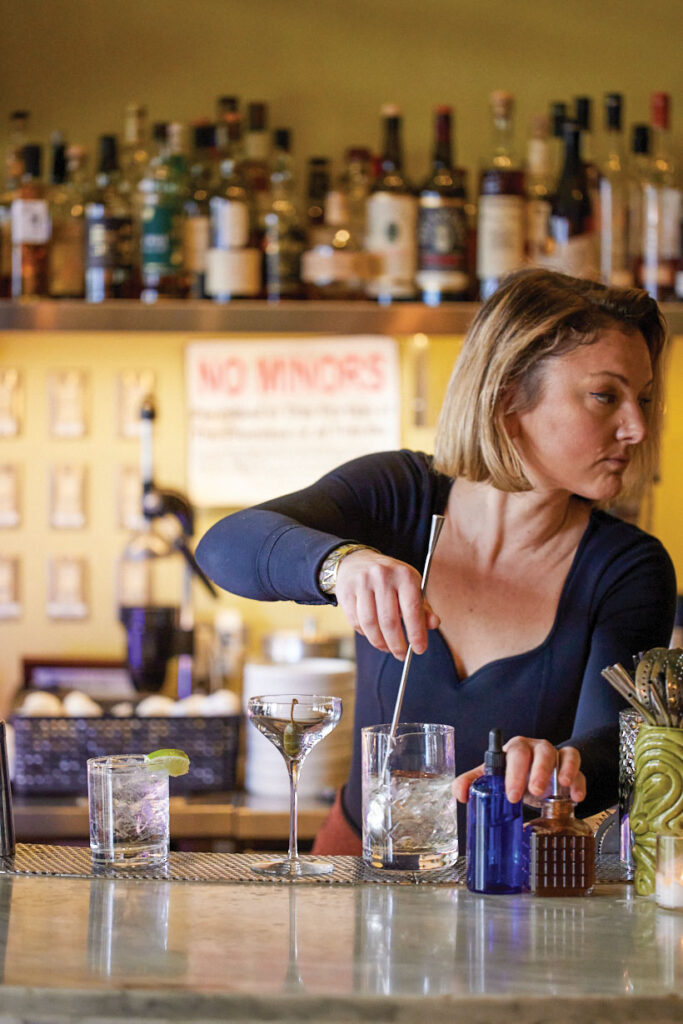
Miriam Portney, bar director at Portland, OR-based Canard, says it’s been a challenge getting her hands on all the cool new American whiskeys she’d love to be experimenting with these days, such as ryes. And the new single malts are so varied, she would need to taste them on a one-by-one basis before deciding how to use them in cocktails.
“I feel like I haven’t wrapped my head around any kind of singularity with it,” Portney says. “There would be some minimal intervention in some because they’re so terroir driven that you don’t want to stomp on it too much.”
At Big Star in Chicago, crowd pleasers include Buffalo Trace’s Antique Collection and Pappy Van Winkle, with Michter’s close behind. Beverage director Laurent Schroeder-Lebec also likes to work with local distilleries. “Those have been really enjoyable to put on the menu and feature in cocktails,” he says. One example is 3 Floyds Distilling in Indiana and its 2 year Divine Rite malt whiskey. “It kind of blew my socks off when they brought it in,” he says.
Seven Grand in San Diego sticks close to tradition when it comes to whiskey cocktails, Judd says, with their best sellers being Old Fashioneds and Whiskey Sours. “However, one of the things that I’ve really started to enjoy, and I think guests have as well, are Highballs,” he says. “People are looking for lighter, more crisp, refreshing spirits.”
He also offers Mile High Club, which he describes as a “juicy, classic cocktail turned upside down,” made with bourbon, Campari, apricot liqueur, lemon juice and bitters. “It’s bright and refreshing, but bourbon, because it has to be aged in new charred oak barrels, has a real big presence in the drink,” he says.
At Chicago’s Bar Pendry, lead mixologist Erica Dimmig likes to work with smaller American whiskey brands that have real authentic stories behind them. “A lot of the smaller distilleries are producing some really incredible products,” she says, citing Uncle Nearest, FEW out of Evanston, IL and also local Chicago producer CH Distillery’s Jeppson’s Bourbon.
The latter, she says, has a “bit of a bite to it, a bit of a kick and is absolutely delicious to use in classic bourbon cocktails, your Manhattan, your Old Fashioned. They even have a rye that’s really great in a Sazerac.”
In Philadelphia, at the recently opened Post Haste, owner and beverage director Fred Beebe likes to take advantage of all the new American whiskeys from east of the Mississippi in keeping with his establishment’s farm-to-glass ethos. One of the more interesting sources, he says, is right in his own state, Liberty Pole, out of Washington, PA, and its bourbon smoked with peat imported from Scotland. “It’s very interesting to have an American alternative for a smoky whiskey,” he says.
He uses that whiskey for innovative cocktails including a variation of a Penicillin called a Pearnicillin, with smoked pear, ginger and honey syrup, yuzu along with the smoked bourbon; and a Blood & Sand variation made with the smoked bourbon, cherry-infused Laird’s Jersey Lightning apple brandy made in the neighboring state, smoked cherry syrup, IPA syrup and compote superjuice.
Ben Brown, beverage director at Porchlight in New York, says one of its top-selling cocktails is the Wisconsin Brandy Old Fashioned featuring Remy Martin 1738, Rittenhouse Rye, Maraschino, citrus, Cherry Heering, orange and Angostura for $17. Another is their Menta Sazerac consisting of Rittenhouse Rye, Branca Menta, absinthe, Demerara, grapefruit oil and Peychaud’s, also for $17. Boilermakers are also popular, he says.
Nearing a Price Ceiling?
All this enthusiasm and seeking out the next big thing in American whiskey continues to drive category sales — and prices. According to Canepa in Ohio, “the category continues to experience robust growth, with revenue increasing at a faster rate than volume. This growth can be attributed to the ongoing premiumization trends.”
Adds Agnes, “People are looking for the quality, and so far they don’t seem to be worried about spending the money to get it. If they know what they want, and they’re educated about it, they’ll spend the money to get it.”
Minnesota’s stores are harnessing the enthusiasm around those hard-to-get bottles by holding online lotteries. This also has the benefit of adding social media followers, which can drive more shoppers into its stores. “What we’ve found is we’re drawing in customers from other areas that might not come to our store,” Agnes says.
But recent months have also seen some evidence that the wild, heady days “Consumers are becoming slightly more price sensitive when considering new whiskey purchases,” says Canepa in Ohio. “As prices approach the $80 mark, it appears that consumers may tend to hesitate, and they are less likely to make impulsive purchases of more expensive brands without a recommendation from a trusted source. This emphasizes the significance of building trust and establishing brand credibility among consumers.”
In fact, Maloney says he has been advising suppliers to try to target the $50 mark with their bottles, as customers are being a little bit more discerning.
“I think you’re seeing fewer people saying, ‘I gotta have that in my collection.’ There’s got to be a real reason for it now,” he says.
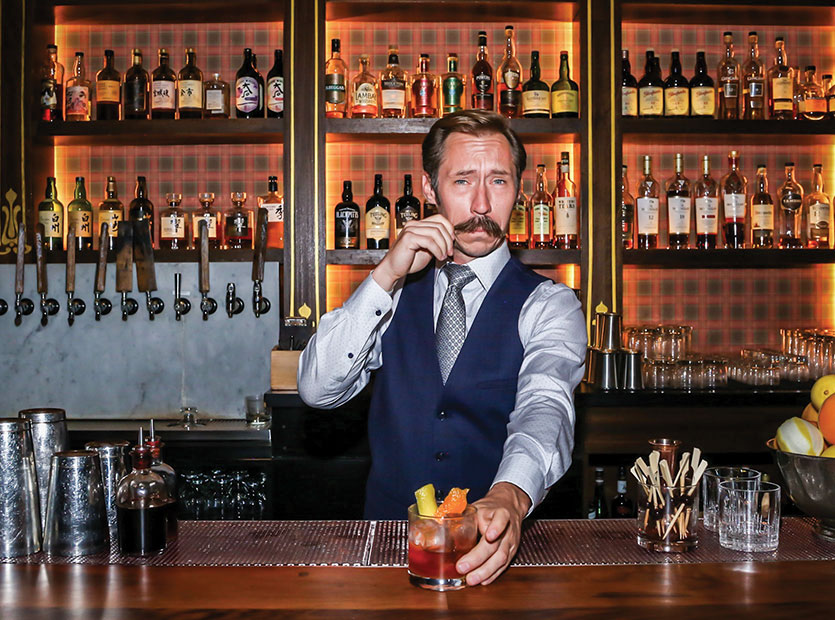
More Room for Growth
What will the next year bring for American whiskey? Some predict coming months could see more use of the newly legalized 700-ml. bottle domestically. It’s a size that’s already popular overseas.
And the category continues to attract investments from players big and small. For example, Pernod Ricard USA this past March bought a majority stake in popular peanut butter-flavored Skrewball.
Pernod also recently formed The American Whiskey Collective, a unit dedicated to “capitalizing on the strong growth — and growth potential — of its American whiskey portfolio,” such as Jefferson’s, TX Whiskeys, Smooth Ambler and Rabbit Hole. It will invest about $250 million over five years to build a state-of-the-art, carbon neutral distillery, with related aging warehouses in Marion County, KY, for the Jefferson’s brand.
“We think we’re at a time and place where we need to create more capacity for our biggest bourbon brand Jefferson’s,” says Craig Johnson, head of the Collective. “And we want to make sure that these brands have the ability to grow worldwide.”
Pernod’s move aligns with the direction Katz, of Southern Glazer’s, sees the American whiskey category heading. “I think we’re still in the first third of a long arc,” he says. “And it goes in multiple directions. It’s almost as if the American whiskey range is a six-lane superhighway. On the right, it’s small craft distillers. On the left are the big brands that we all know. But each of their influences go both ways.”
Feature photo by Brett Jackson on Unsplash.
Andrew Kaplan is a Queens, NY-based writer who covers the beverage industry.

